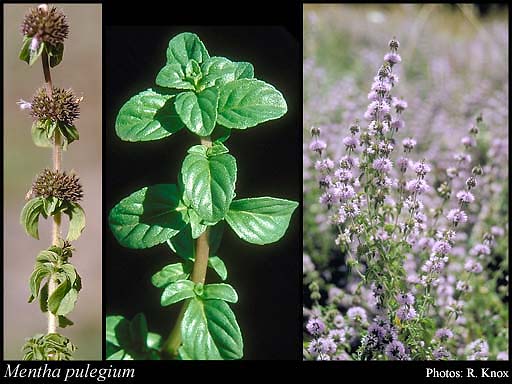- Reference
- Sp.Pl. [Linnaeus] 2:577 (1753)
- Conservation Code
- Not threatened
- Naturalised Status
- Alien to Western Australia
- Name Status
- Current
Highly aromatic, prostrate to ascending rhizomatous, perennial, herb, 0.15-0.7 m high. Fl. blue-purple-pink, Sep or Dec or Jan to Mar. Sandy or clay, usually damp soils. Winter-wet flats, creeklines, swamps.

Distribution
- IBRA Regions
- Avon Wheatbelt, Esperance Plains, Jarrah Forest, Swan Coastal Plain, Warren.
- IBRA Subregions
- Dandaragan Plateau, Katanning, Northern Jarrah Forest, Perth, Recherche, Southern Jarrah Forest, Warren.
- IMCRA Regions
- WA South Coast.
- Local Government Areas (LGAs)
- Albany, Augusta Margaret River, Bridgetown-Greenbushes, Busselton, Capel, Collie, Cranbrook, Dardanup, Denmark, Esperance, Gingin, Harvey, Kwinana, Manjimup, Murray, Nannup, Plantagenet, Waroona.
Management Notes (for the Swan NRM Region)
General Biology. Growth form. Herb. Reproduction. Seeds require light for germination and will not germinate when buried. Seeds can germinate and seedlings survive even when flooded to a depth of 10 cm for long periods.. Dispersal. Seeds are spread by running water, machinery, livestock, contaminated hay and pasture seed.. Seedbank persistence. Seeds buried may remain dormant for 12 months or more.
Notes. Perennial herb with blueish flowers, and pungent mint-smelling leaves when crushed. Stems are square, covered with hairs and can vary in length (usually < 50 cm high). Some stems are usually upright. Some stems can creep along the ground which can grow roots at the node producing new plants. Leaves are stalked, oblong to rounded (up to 3 cm long and 1 cm wide) and are in opposite pairs. Leaf margins may have small, blunt teeth. Small mauve flowers are produced in dense clusters in the leaf axils along each flowering stem..
Additional information. Origin. Northern Africa, the Azores, the Madeira Islands, the Canary Islands, most of Europe and western Asia.. History of use/introduction. This species has escaped cultivation as a garden herb and invaded grasslands, alluvial plains and wetter habitats..
Suggested method of management and control. Single plants can be removed manually if all rooting material is collected. Alternatively spray annually with herbicide (10 g chlorsulfuron plus 250 mL Pulse® per 100 L water) when the plants are actively growing in summer prior to flowering. Read the manufacturers' labels and material safety data sheets before using herbicides. For further information consult the Australian Pesticides and Veterinary Medicines Authority to determine the status of permits for your situation or state.
Management Calendar
| Calendar Type | Jan | Feb | Mar | Apr | May | Jun | Jul | Aug | Sep | Oct | Nov | Dec | Comments |
|---|---|---|---|---|---|---|---|---|---|---|---|---|---|
| Active Growth | Y | Y | Y | ||||||||||
| Optimum Treatment | Y | Y | Y |
Legend: Y = Yes, regularly, O = Occasionally, U = Uncertain, referred by others but not confirmed.
References
- HerbiGuide (2014) Mentha pulegium. Herbiguide Pty Ltd URL: http://www.herbiguide.com.au/Descriptions/hg_Pennyroyal.htm - Accessed May 2019.
- Queensland Government (2016) Weeds of Australia. Identic Pty Ltd for Biosecurity Queensland, Queensland. URL: https://keyserver.lucidcentral.org/weeds/data/media/Html/mentha_pulegium.htm - Accessed May 2019.